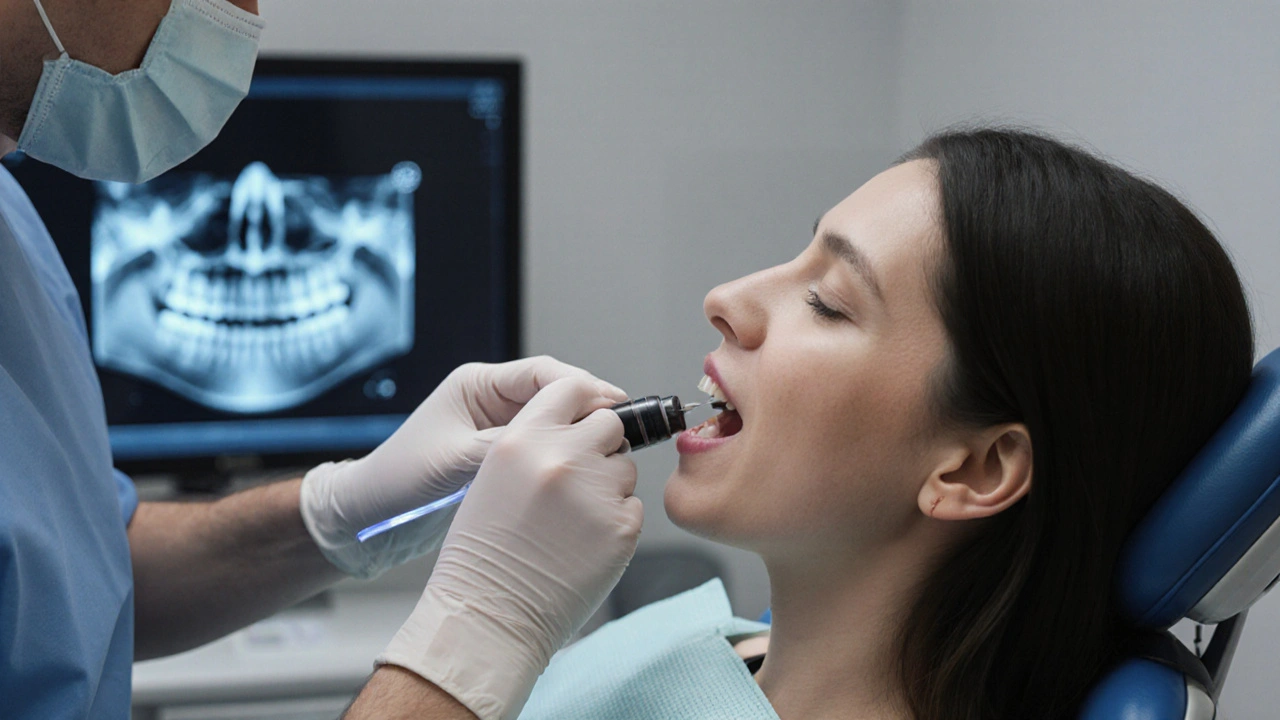- Jak zubní implantáty pomáhají při osteoporóze: Co musíte vědět Dec 7, 2025
- Jak zmirnit tlak v zubu: praktické rady pro okamžité ulevění a co dělat dál Oct 27, 2025
- Chirurgická extrakce zubu - co to je, kdy ji potřebujete a jak probíhá Oct 23, 2025
- 5 způsobů, jak zubní kámen ovlivňuje sebevědomí dětí Oct 12, 2025
- Nalepovací zuby - zkušenosti zákazníků, výhody a tipy Oct 22, 2025
Rentgen u zubaře: Co vám ukáže a proč je to nezbytné
When you visit a dentist for a check-up, rentgen u zubaře, digitální zobrazovací metoda, která umožňuje vidět struktury zubů a čelistí skrze kůži a tkáně. Also known as zubní rentgen, it is the most common tool dentists use to find problems hidden beneath the surface — like decay between teeth, infected roots, or impacted wisdom teeth. Without it, you’re guessing. With it, you’re getting real answers.
Many people think X-rays are only for broken teeth or severe pain. That’s not true. A routine zubní rentgen, používaný k detekci kazu, zánětů a neviditelných vývojových problémů can catch a tiny cavity before it becomes a root canal. It shows bone loss from gum disease long before your gums start bleeding. It reveals if a child’s permanent tooth is growing in the right direction — or if it’s stuck under the gum. Dentists don’t use it to scare you. They use it to stop problems before they hurt.
Modern digital zubní paprsky, technologie, která vytváří snímky s mnohem nižší dávkou záření než staré filmové rentgeny are so safe, you get less radiation than during a short flight. One standard bitewing X-ray equals about 1 day of natural background radiation. And you don’t need to wear a lead apron every time — modern machines focus the beam precisely where it’s needed. If you’re pregnant, tell your dentist. They’ll adjust or delay it, but rarely skip it if there’s an urgent issue.
How often do you really need one? For most adults with good oral health, every 1–2 years. If you have a history of cavities, gum disease, or complex treatments like implants or root canals, your dentist might recommend one every 6–12 months. Kids often need them more often because their teeth and jaws are still growing — and problems can develop fast.
Some think: "I brush well, so I don’t need it." But brushing doesn’t clean between teeth. That’s where 80% of cavities start. A visual exam can’t see through enamel. Only a zubní diagnostika, proces, který využívá rentgen jako klíčový nástroj pro objektivní posouzení stavu zubů a čelistí shows what’s really going on under the surface. A white spot on a tooth? It might be early decay. A dark line near the gum? Could be a hidden crack. A shadow around a root? That’s infection. These aren’t guesses — they’re facts from the image.
You’ll find posts here that explain how a hidden cavity leads to a crown, why a child’s adult tooth might not erupt, or how a failed root canal shows up on a scan. These aren’t random stories. They’re real cases where a simple X-ray changed everything — saving a tooth, avoiding pain, or catching a problem before it spread. This collection isn’t about fear. It’s about clarity. About knowing what’s really happening inside your mouth — not just what you can see or feel.
Jak často máte nárok na rentgen u zubaře v České republice?
- Veronika Skalická
- Nov 6, 2025
Zjistěte, jak často máte nárok na rentgen u zubaře v České republice. Odporučené frekvence podle věku, rizika karies a zubního zdraví. Všechno, co potřebujete vědět, bez zbytečných technických detailů.
